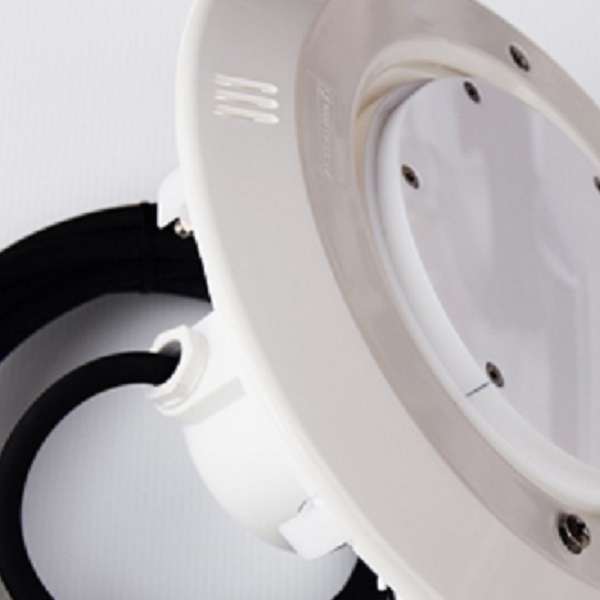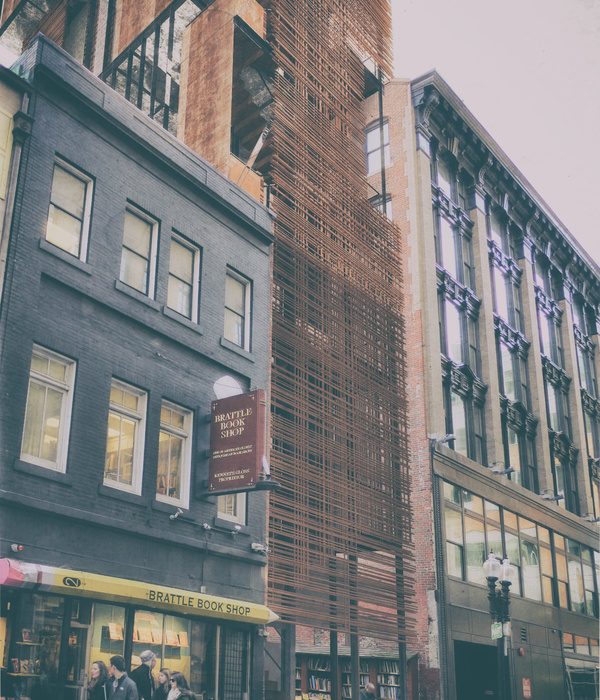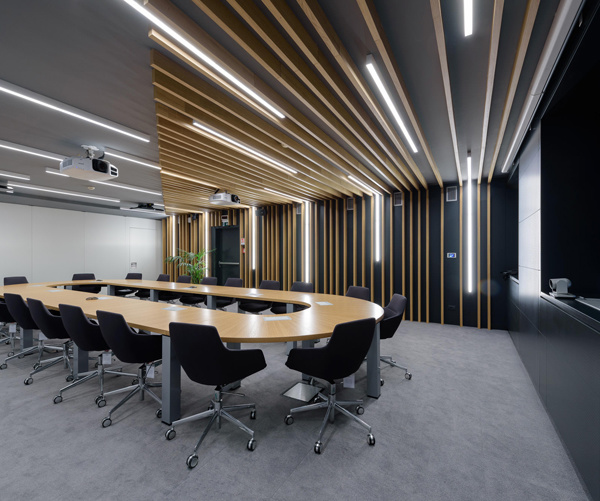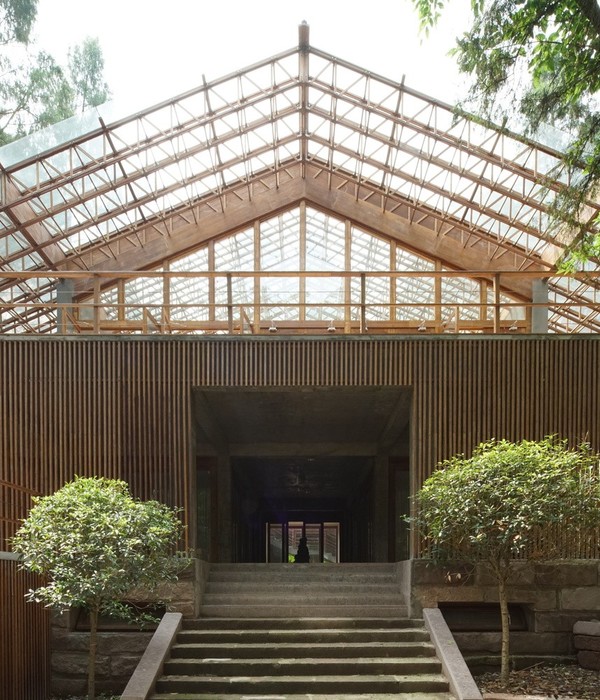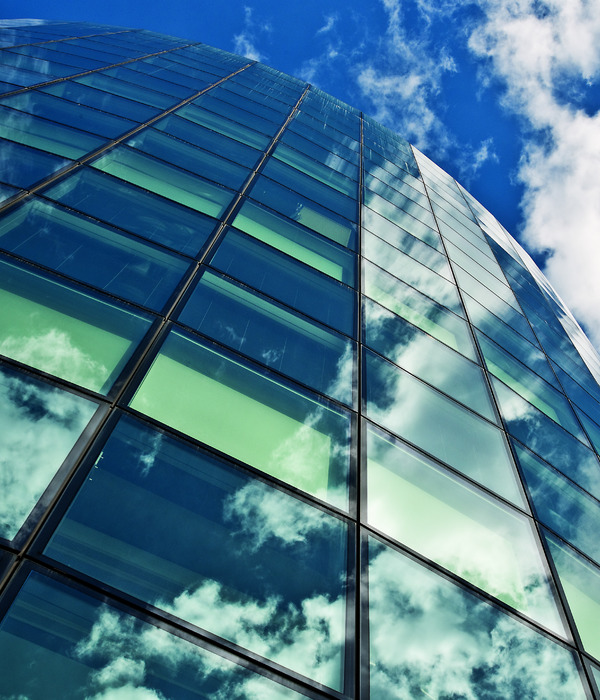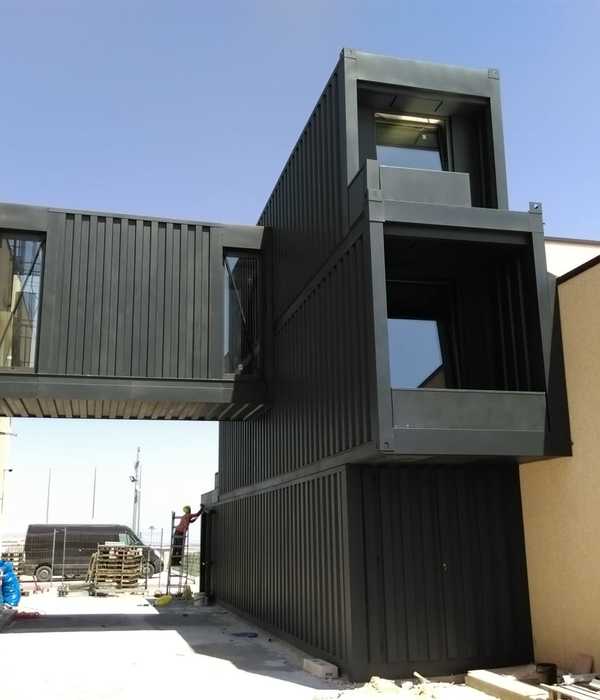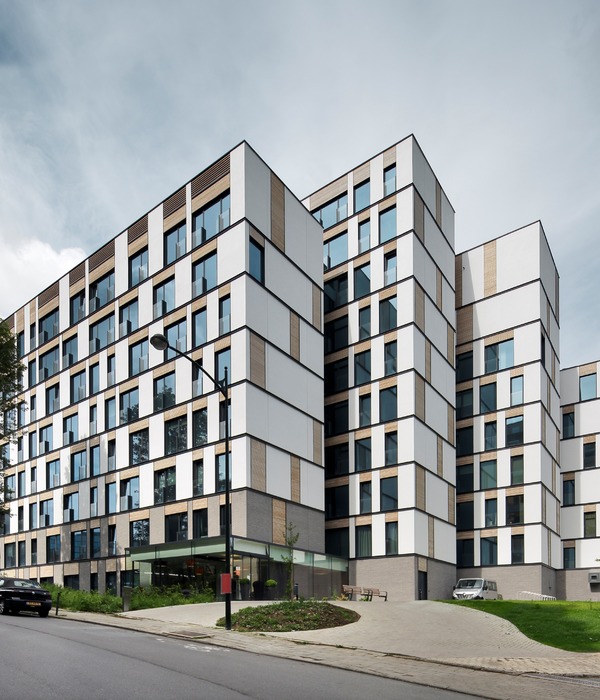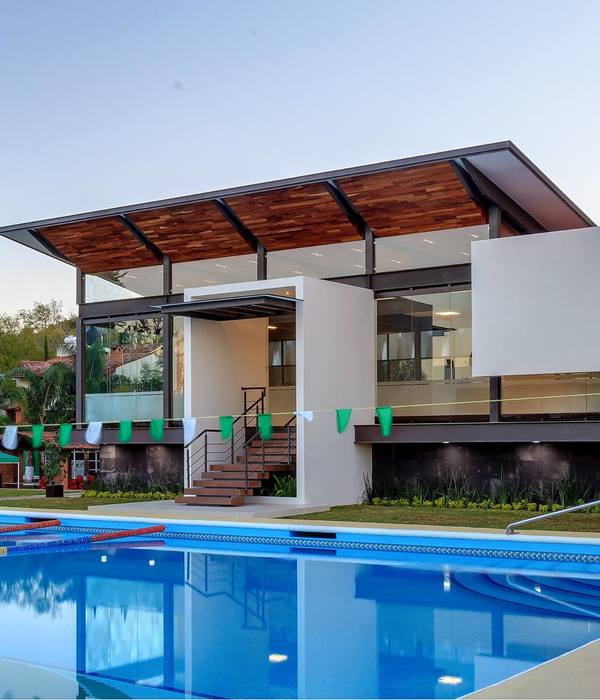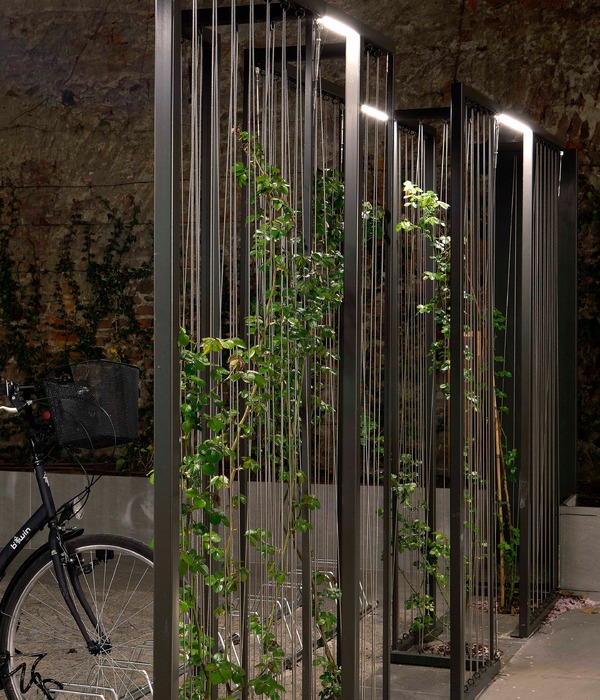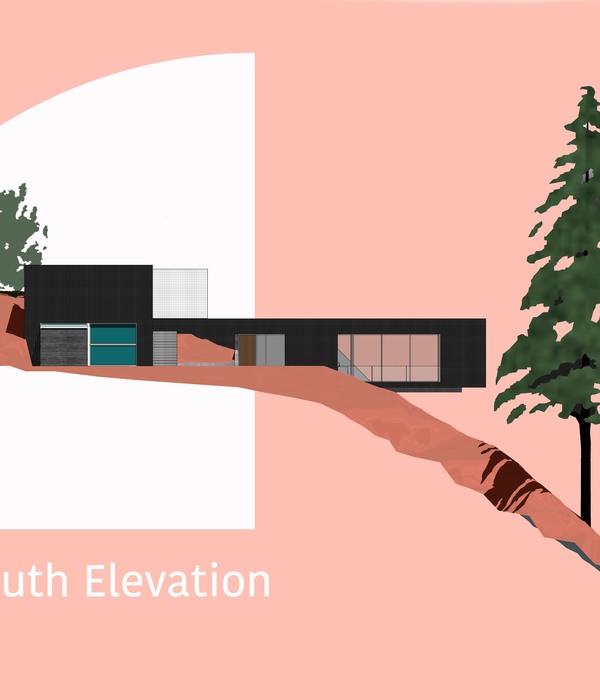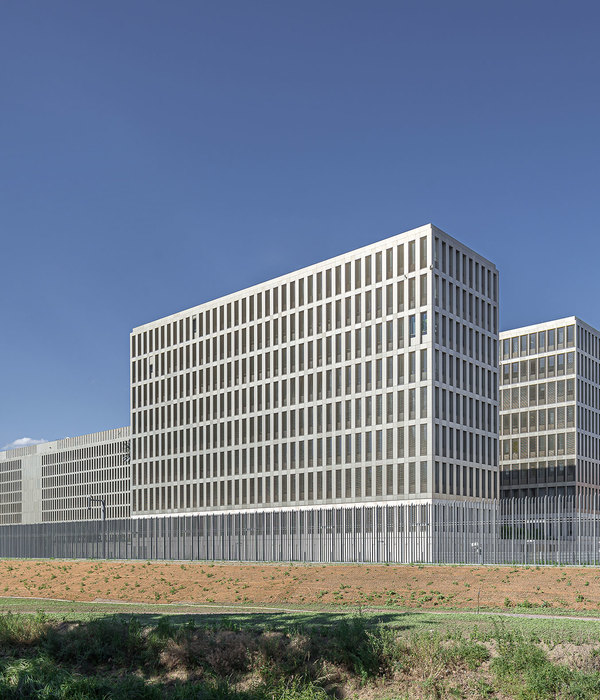The diversity and multi-faceted nature of Indian culture is captured in the use of a translucent shimmering façade to create an impression of the IHC as a “shining jewel” in the day, and transforming into a “glowing lantern” at night.
The most distinctive motif of the building is a pattern created from the geometry of the baoli, an Indian stepped well that is a lifeline and traditional source of water, as well as a meeting point for the community. The baoli also represents an active environment where the young and old interact, stories are told, and tradition is passed on.
The baoli is translated onto the façade via the composition of the curtain wall glazing, with staircases serving as a three-dimensional jali (intricate ornamental openwork typically found in Indian and Islamic architecture), modulating light, air and views between the streetscape and the galleries. In opening up the gallery experience to the street, visitors to the IHC become ‘actors’ against the colourful gallery wall, enticing passers-by to look in and engage with the building.
Another design inspiration is the five-foot way, which refers to the traditional five-foot wide covered pedestrian walkways along rows of shophouses, usually found in Singapore and Malaysia. This concept has been expressed as a vertical circulation core in the façade of the IHC. Staircases within the façade provide access between the galleries, and afford visitors a visual connection to the street. Where there are no stairs, apertures in the gallery wall act as small balconies for the display of changing exhibits that are visible from the street as well as the gallery, further opening up the IHC experience to passers-by in the street below.
The galleries were conceptualised as repositories of calm and reflection, and offer visitors a respite from the hustle and bustle of Little India. Materials and lighting were designed to focus the visitor experience on the objects and exhibits within the galleries. As the galleries are relatively small, dark surfaces are used to increase the perception of depth, with lighting focused on the artifacts, which appear to float within the space. The oscillation between light and dark, openness and closure — as visitors move between the galleries via the façade staircase — enhances the visitor experience and reconnects them with the street outside.
A unique part of the building is the design of the façade curtain wall glazing. The entire curtain wall is suspended from the upper row of reinforced concrete landings. To keep steel member sizes to a minimum and provide additional support, stainless steel tension wires were employed, while lateral movement is controlled via connections to concrete landings at all levels.
{{item.text_origin}}

